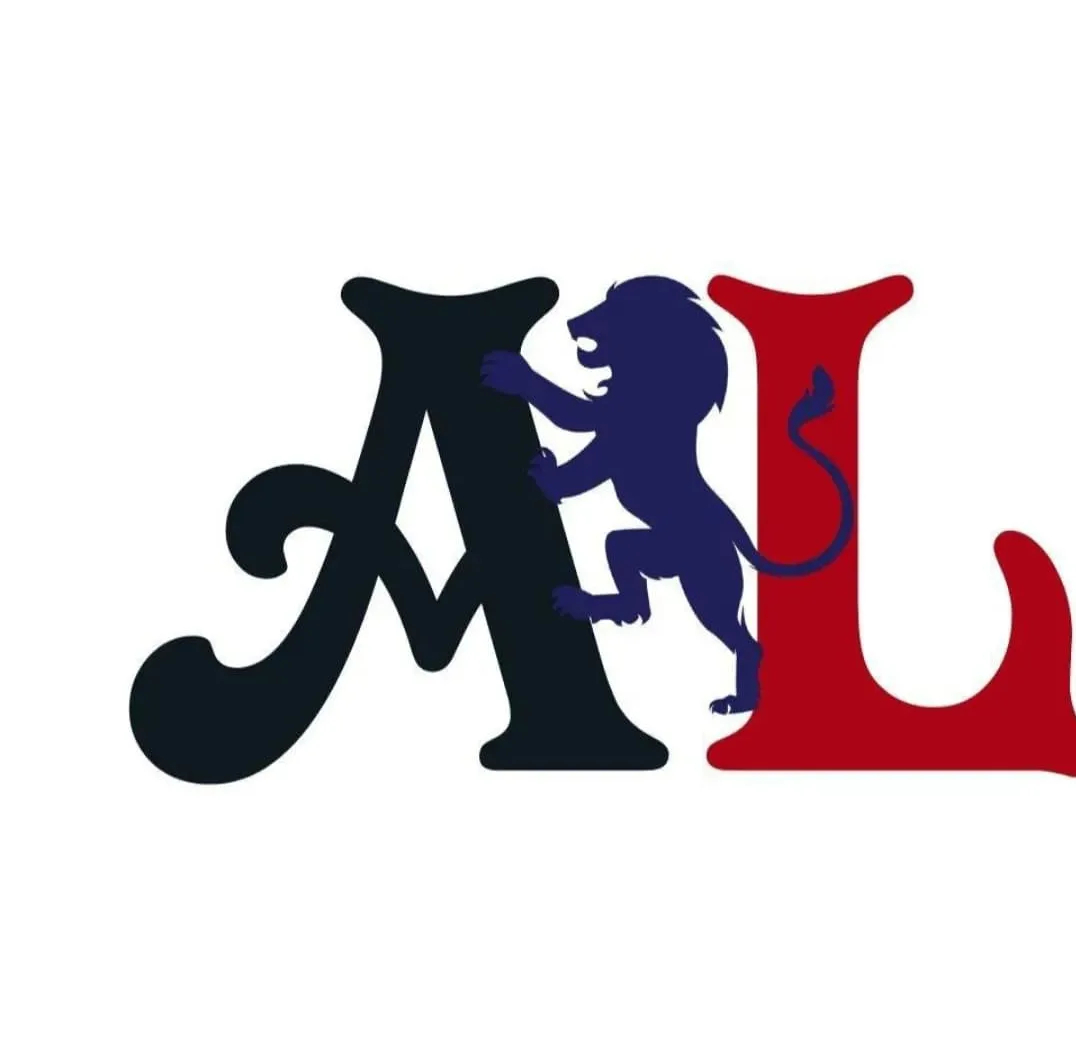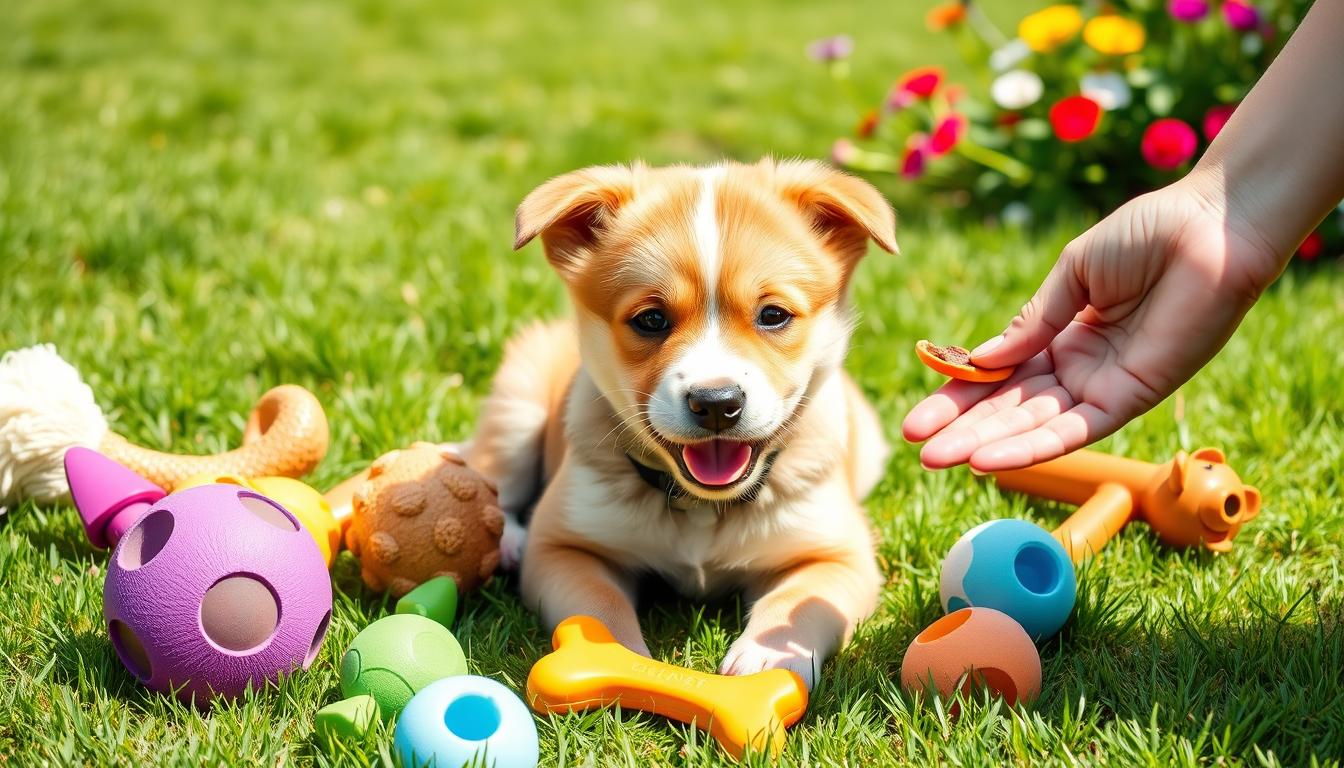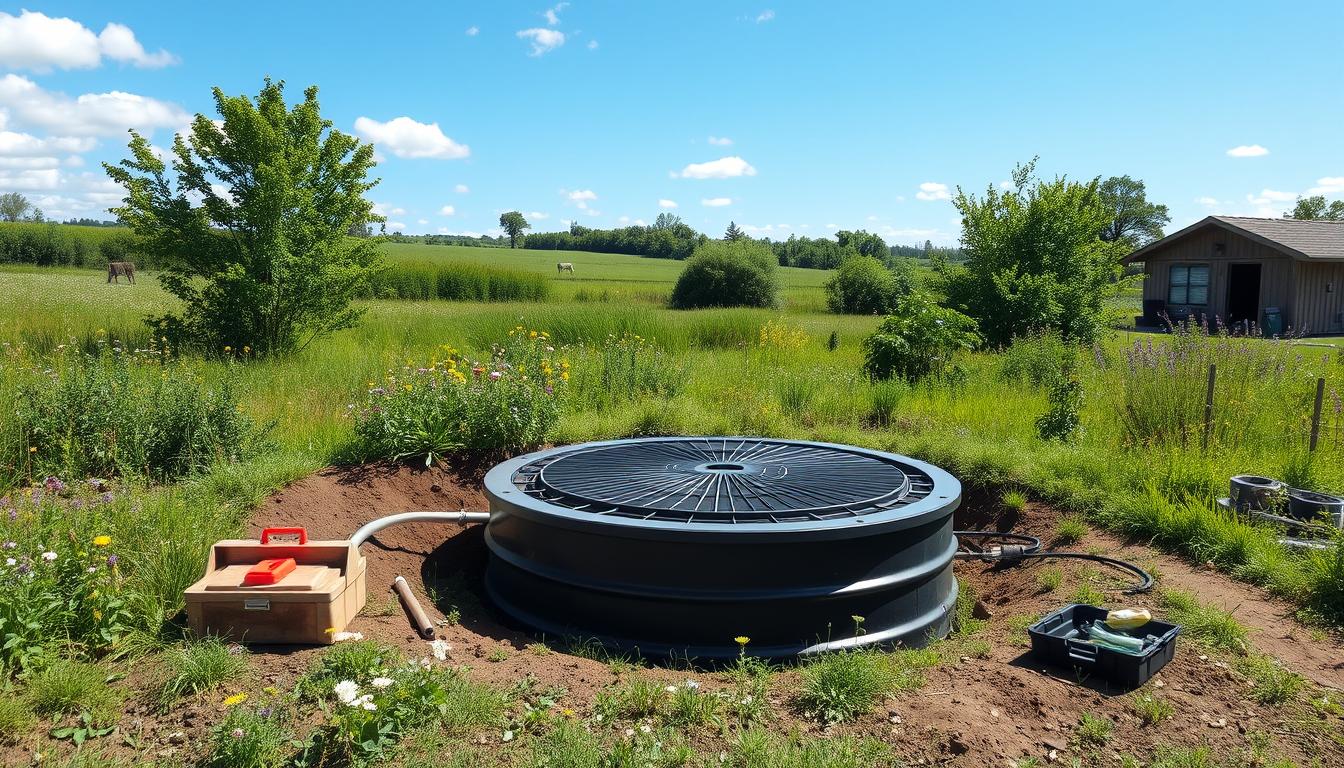There’s nothing quite like the joy a puppy brings into a home. The love, the laughter, and the unexpected nibbles on our fingers are unforgettable. But when that gentle mouthing turns into persistent nipping, it can be overwhelming.
I’ve been there myself, trying to stop puppy biting without losing that playful spirit. Teething lasts until about seven months, so our puppies need our help to learn right from wrong. Let’s explore how to train our puppies, balancing love and limits to stop nipping and enjoy every moment with them.
Key Takeaways
- Teething in puppies, a key phase lasting until seven months, calls for effective puppy biting prevention.
- Providing appropriate toys, and alternating them daily, can hold a puppy’s interest and stop undesirable chewing.
- Playpens and puppy gates are practical tools in puppy-proofing and discouraging puppy biting.
- Proper puppy behaviour training, including bite inhibition, can transform sharp puppy teeth into a gentle mouth.
- Redirecting biting to suitable chew toys is a cornerstone of puppy training tips.
- Seeking professional advice from vets or trainers can help navigate the complexities of puppy behaviour training.
Understanding Puppy Biting Behaviour
Puppies are not just cute; they are young explorers using their mouths to learn. This behaviour needs guidance to avoid problems. Bite inhibition training for puppies and managing puppy mouthing are key. Knowing why puppies bite and how to manage it ensures their safety and growth.
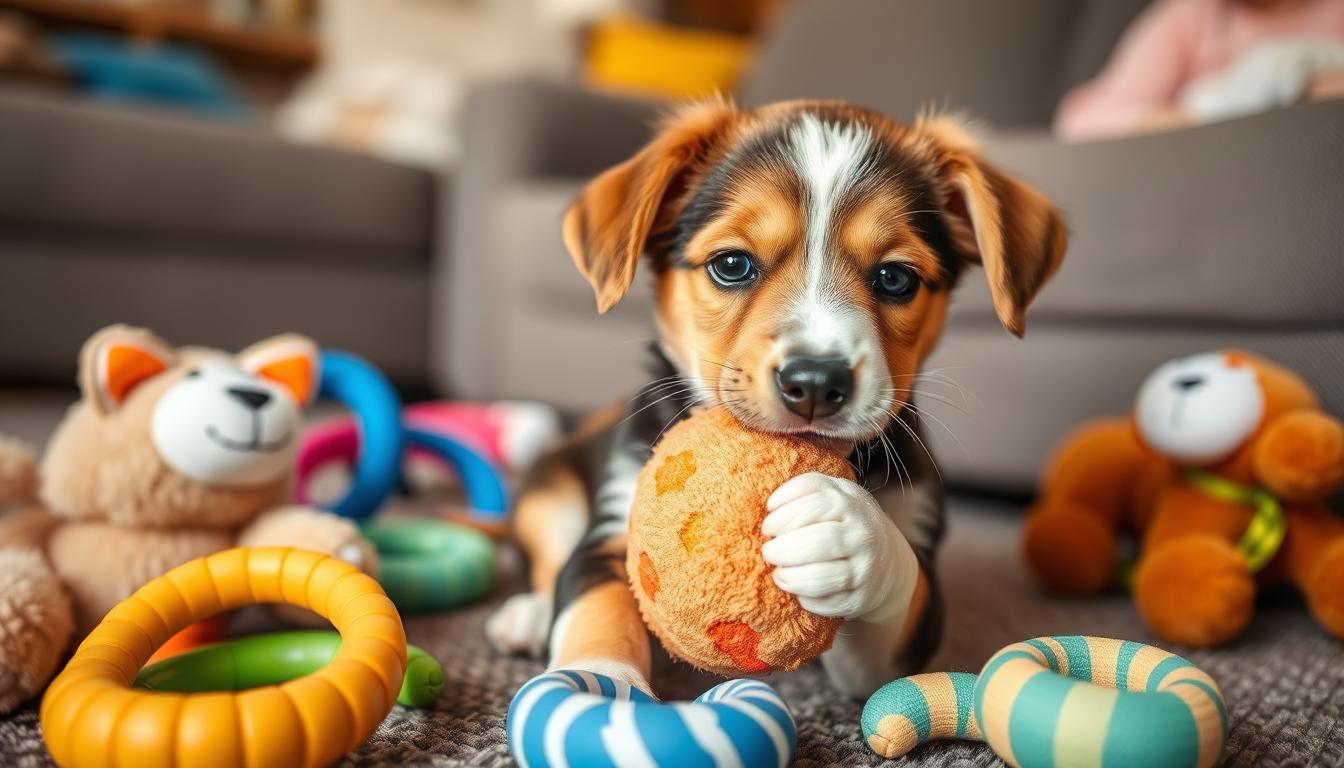
Exploring the World Through Biting
Puppies explore like toddlers use their hands. They touch, taste, and test everything. It’s important to watch and guide them to avoid bad habits.
Supervised play with other puppies is vital. It helps them learn to control their bite and understand social cues.
Teething: An Underlying Cause
Teething is a big reason for puppy biting. It’s painful and they chew to feel better. Giving them toys like rubber KONGs or ropes helps.
Introducing taste deterrents also stops unwanted chewing. This helps a lot in managing puppy mouthing.
Most puppies stop biting by six to seven months. But, training, socialisation, and the right toys make this easier. For ongoing problems, get help from certified trainers or behaviourists.
Steps to Discourage Puppy Biting
Managing puppy behaviour, especially nipping and mouthing, is crucial. Puppies use their mouths to explore from a young age. This includes biting during play and when they’re teething. Around 3-4 months, they get adult teeth, leading to more chewing.
Let’s look at practical steps and strategies for managing puppy mouthing. These methods are effective, kind, and considerate for our furry friends.
- Offer Suitable Chew Toys: Give chew toys that are safe and fun for your pup. This helps them stop biting hands or things they shouldn’t.
- Establish a Bite-free Environment: Use playpens or puppy gates to keep play areas safe. This stops them from biting things they shouldn’t and teaches them boundaries.
- Monitor Play Time: Play gently with your puppy. If they bite, stop playing right away. This teaches them biting means no more fun.
- Positive Reinforcement: Reward your puppy for not biting during play. Use treats, praise, or their favourite toy to encourage good behaviour.
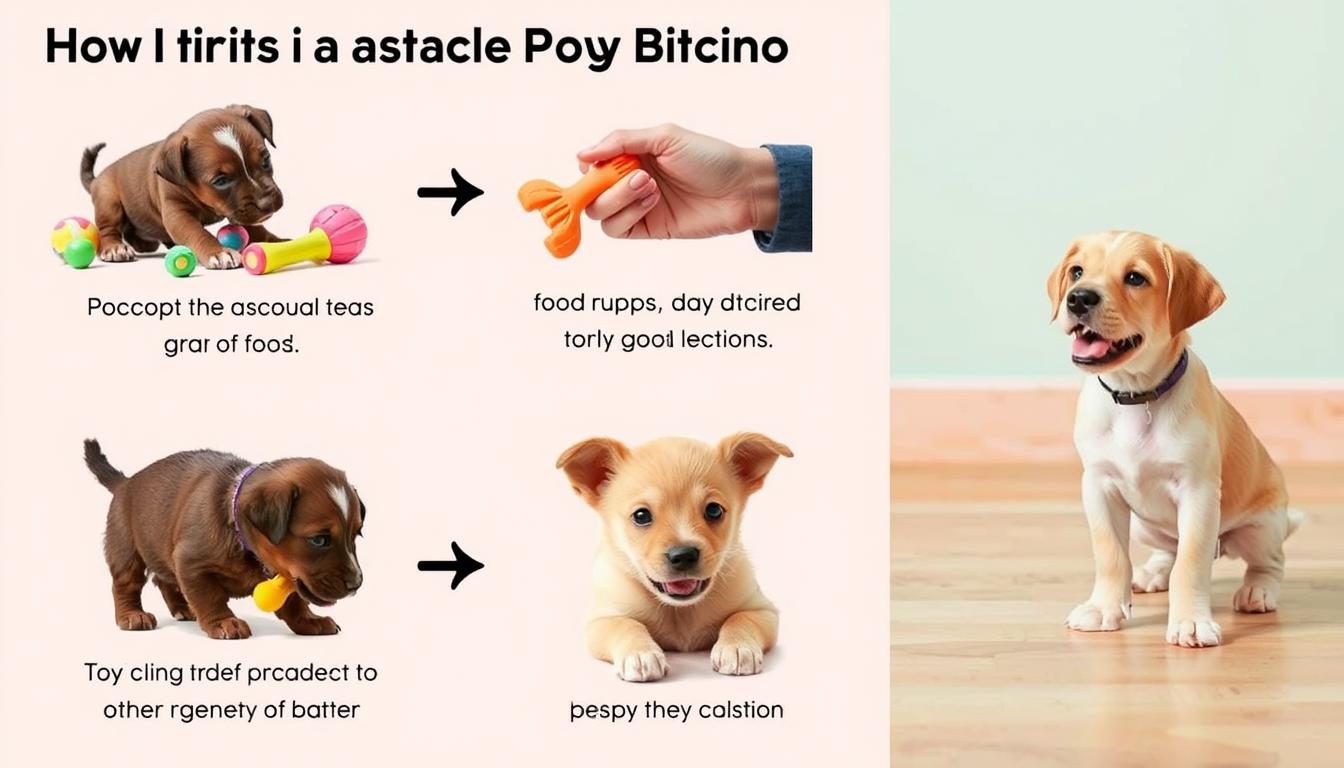
| Age / Behaviour | Training Techniques |
|---|---|
| 3-4 months / Teething | Provide teething toys to soothe gums |
| Continuous / Explorative Mouthing | Redirect focus with chew toys and structured play |
| Ongoing / Excessive Energy | Engage in regular, energy-draining activities like fetch |
| Ongoing / Attention-seeking | Train to perform sit or down instead of mouthing |
| Evening / Likely Overtiredness | Establish a calming evening routine to reduce hyperactivity |
Using these techniques helps build respect and good behaviour in your puppy. Remember, consistency is key in training. For more advice, talk to a professional trainer who can help with your puppy’s specific needs.
Bite Inhibition Training for Puppies
Bite inhibition training is vital for puppies. The way we train them can greatly affect their behaviour. I use gentle but clear methods to teach them about human skin sensitivity. This helps them learn to control their bite.
When my puppy bites too hard during play, I use a high-pitched yelp. This lets them know they’ve bitten too hard. Then, I stop play to show them that hard biting isn’t fun. Experts like Sarah Whitehead suggest this method, but adjust it if your puppy gets too excited by loud noises.
Being consistent is crucial in teaching bite inhibition. It’s best to start training between 3 to 5 months. Daily practice is essential. Adding the ‘leave it’ command and using chew toys during play helps too.
| Technique | Effectiveness |
|---|---|
| High-pitched yelp and pause | Effectively teaches bite moderation unless the puppy is excited by such sounds |
| ‘Leave it’ command | Helps phase out inappropriate mouthing behaviours effectively |
| Redirecting to toys | Minimizes mouthing on inappropriate objects by occupying the puppy’s mouth |
| Consequences for rough play | Teaches awareness and responsibility, enhancing puppy training |
Punishing puppies for biting doesn’t teach them about bite inhibition. It can even make them bite harder in the future. Instead, use positive reinforcement and consequences for rough play.
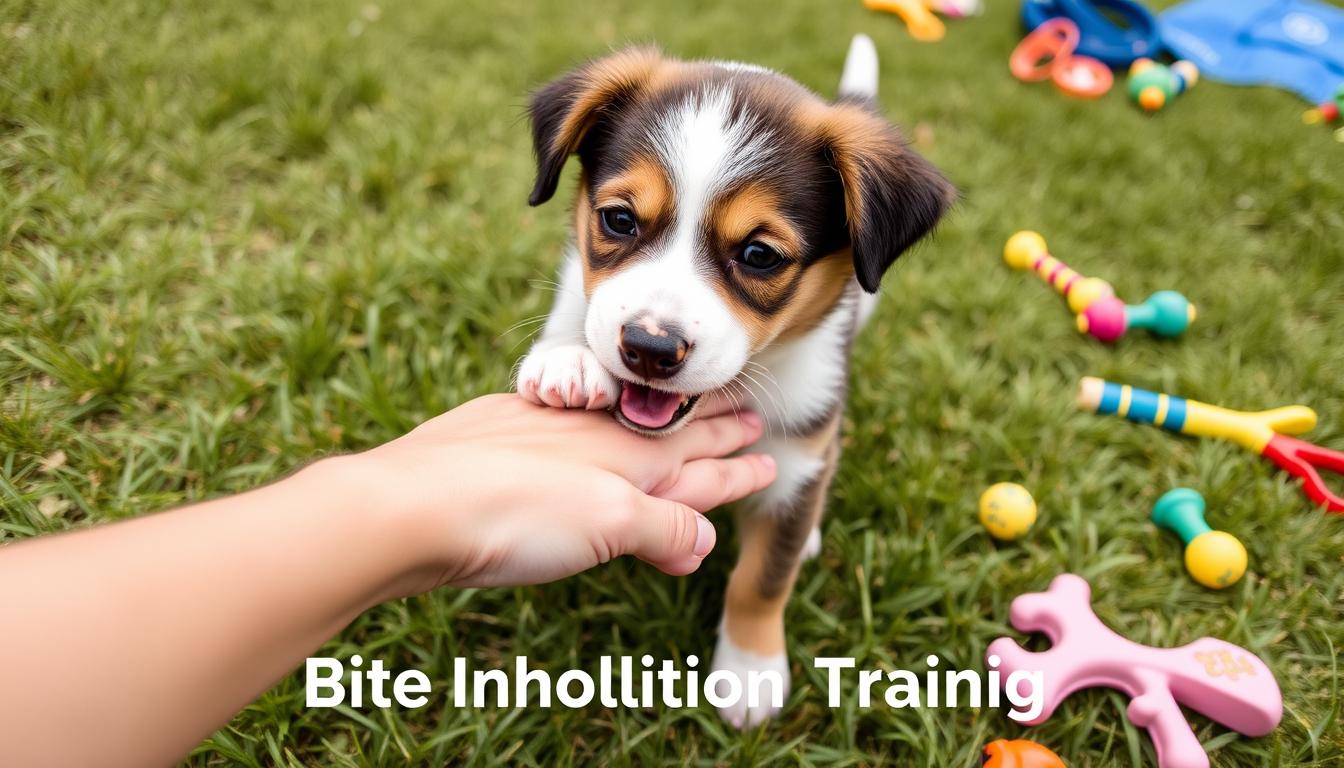
Using these methods helps prevent dog fights and serious injuries. If you’re unsure or have an older dog with nipping issues, a behaviourist can help.
Understanding and patience are key in teaching puppies not to bite. Regular exercises that reinforce these lessons can help them develop good bite behaviour for life.
Puppy-Proofing Your Living Space
Welcome to our guide on puppy-proofing your home. It’s all about keeping your new furry friend safe and happy. We’ll show you how to make your home safe and fun for your puppy.
Creating a Safe Environment for Your Puppy
Start by checking your home for dangers. Make sure trash cans and diaper pails are out of reach. Puppies might eat things like raisins or chocolate, which are bad for them.
Also, cover electrical outlets and keep wires tied up. Puppies might chew on them. Secure heavy furniture and take down curtains that are too low. They could be a hazard.
Keep medicines and cleaning supplies high up. Move any plants that could be harmful out of reach. Dog gates are great for keeping your puppy in safe areas.
Choosing Suitable Toys and Chews
It’s important to keep your puppy entertained and safe. Give them a variety of suitable toys and chews. This keeps them from chewing on things they shouldn’t and helps with their development.
Try different textures like rope and rubber. They help with chewing and are good for training. Change toys often to keep things interesting. Always praise them for choosing the right things to chew on.
https://www.youtube.com/watch?v=umD3Jf6o1H0
Making your home safe and fun for your puppy is key. Follow these steps to create a great environment for their health and happiness. This will help them grow into a well-trained and happy dog.
How to Stop a Puppy From Biting with Early Training
Starting puppy biting prevention early can really help. It’s about understanding why puppies bite and making their experiences better. Early training is not just about stopping bad behavior. It’s about creating an environment where good behavior is encouraged and bad habits are gently corrected.
Puppies explore by biting, which can include fingers or clothes. To stop this, set clear rules and react the same way every time. If they nip, stop playing and leave the room. This shows them biting means losing your attention, which they don’t want.
Along with not paying attention, give them toys to bite instead. This teaches them that toys are for biting, not people or clothes. Regularly showing them this helps them learn.
| Technique | Description | Impact on Puppy Behavior |
|---|---|---|
| Withdrawal of Attention | Leaving the room when your puppy starts biting. | Teaches puppies that biting results in negative consequences (loss of social interaction). |
| Redirection to Toys | Offering a chew toy instead of hands or clothes. | Redirects biting behavior to appropriate objects, reducing incidents of human biting. |
| Time-Outs | Giving a time-out in a puppy-safe area or crate for overexcited behavior including biting. | Reinforces calm behavior and discourages biting by interrupting the activity. |
Using these early training techniques is crucial for a well-behaved dog. It greatly reduces aggression or dominance problems. Remember, being consistent is important. Every moment with your puppy is a chance to teach them. With patience and effort, these early weeks can shape their future behavior.
Managing Puppy Mouthing During Play
Understanding why puppies mouth things is key. They explore with their mouths, including hands and clothes. Teaching them to play nicely can prevent bad habits.
Avoiding Rough Games that Encourage Biting
Stay away from games that make puppies bite. They need lots of sleep, so calm play is best. This keeps them from getting too tired and nippy.
Using Toys to Redirect Attention
Redirecting their mouth to toys is a good trick. It keeps them from biting people. Toys that last long and are fun help with teething too.
| Strategy | Description | Benefits |
|---|---|---|
| Redirection | Offering toys when puppies begin to mouth | Focuses puppy’s biting on appropriate items |
| Rest Time | Ensuring puppies get sufficient rest | Minimizes overstimulation and fatigue-induced mouthing |
| Recognizing Triggers | Identifying what prompts mouthing | Allows prediction and intervention before mouthing starts |
Using these methods helps puppies learn better ways to play. Keeping a diary of their activities helps manage their mouthing. This way, they grow into well-behaved dogs.
Positive Reinforcement: Rewarding Good Behaviour
As a lifelong dog lover, I’ve learned that positive reinforcement for puppies is more than a method. It’s a kind and understanding philosophy. It rewards good behaviour, not punishing bad ones. This builds a bond of respect and trust between you and your puppy.
Why does puppy behaviour training work best with positive reinforcement? It’s all about timing. Rewards must be given right after the good behaviour to make the connection clear. This could be a treat, a belly rub, or a “good boy” praise.
- Keeping commands short and straightforward is vital because dogs primarily learn through body language.
- Common cues such as “sit”, “stay”, “come”, and “heel” should be used consistently by all family members to avoid confusing your pup.
- Rewards can vary from food treats to favourite toys, depending on what motivates your puppy the most.
Dogs learn what’s good and link training to positive outcomes. This makes training a positive experience for them. The aim is for your praise to motivate them, with treats as a bonus.
Here’s a look at a typical day in puppy training tips using positive reinforcement:
| Time of Day | Activity | Type of Reward |
|---|---|---|
| Morning | Puppy sits before breakfast | Verbal praise and breakfast |
| Midday | Puppy comes when called | Small, soft treat |
| Evening | Puppy fetches a toy | Play session with the toy |
Using positive reinforcement for puppies means being consistent and timely. Sessions should last about 30 minutes a day. Focus on rewarding good behaviour right away and gradually increase expectations. Adapt strategies to fit your family’s needs, ensuring a positive learning environment for your puppy.
Getting a professional dog trainer who uses positive reinforcement can greatly help your puppy’s learning. Look for trainers through organisations like the Association of Professional Dog Trainers.
So, embrace positive rewards and watch your puppy grow into a well-behaved and happy dog. It’s a rewarding journey that strengthens your bond.
Enrolling in Puppy Training Classes for Socialisation
When I first thought about putting my puppy in puppy training classes, I wanted to stop her from biting and help her meet other dogs. These classes do more than just help with biting. They teach important skills for a well-adjusted dog.
Professional trainers guide us through structured sessions. They help prevent puppy biting. This is crucial.
Benefits of Structured Training
Structured training in these classes is great for puppy biting prevention. Puppies learn a lot between 3 to 6 months old. Their experiences shape their future behaviour.
Trainers teach puppies to use commands like ‘leave it’ and play in a controlled way. This reduces biting. They also use time-outs to teach puppies that biting stops playtime. This teaches self-control and respect.
This makes me feel more at ease knowing my puppy is learning these important lessons.
Socialisation with Other Dogs
In these classes, puppies learn to communicate with each other. They learn about body language, bite inhibition, and social cues. Puppies between 8-16 weeks are very adaptable and learn quickly.
Each session has up to 15 puppies. This means lots of different interactions for them.
Putting your puppy in training classes is a smart move. It helps them become sociable and well-behaved. These early lessons lead to a happy and fulfilling life for our dogs.
Conclusion
Raising a puppy is full of challenges, and teething is one of them. It starts around three to four months and can last up to half a year. It’s key to act fast to stop puppy nipping and help them grow into a well-behaved adult.
By six months, most puppies learn not to bite too hard. This shows that the right strategies work. We aim to prevent biting early to avoid bad habits that can harm our bond.
Guiding puppies early can help them learn not to bite by seven to eight weeks. But, some may keep biting if they don’t get trained or socialised. Well-socialised puppies are less aggressive and learn fast when biting is wrong.
Playtime is crucial to reduce nipping and strengthen our bond. It’s also vital for their development.
Positive reinforcement is key in teaching puppies not to bite. We use gentle methods to show them better ways to behave. This builds trust and security.
Time-outs are important to teach puppies about boundaries. They show that correcting is not just about saying no, but teaching yes. As we move forward, patience and a steady hand are essential. The result is a happy, well-adjusted dog that loves to play without biting.
FAQ
How can I prevent my puppy from biting?
Why do puppies bite and how can I manage puppy mouthing?
What toys and chews are suitable for my puppy?
How do I teach my puppy bite inhibition?
Why is early training important to stop puppy biting?
What types of games should I avoid to prevent encouraging biting?
How does positive reinforcement work in training my puppy not to bite?
Should I enrol my puppy in training classes, and what are the benefits?
Source Links
- https://www.dogstrust.org.uk/dog-advice/training/unwanted-behaviours/stop-your-dog-chewing-mouthing
- https://www.akc.org/expert-advice/training/stop-puppy-biting/
- https://www.aspca.org/pet-care/dog-care/common-dog-behavior-issues/mouthing-nipping-and-biting-puppies
- https://www.petmd.com/dog/training/puppy-biting
- https://www.petplan.co.uk/pet-information/puppy/advice/puppy-biting/
- https://www.bellaandduke.com/dogs/expert-advice/dog-behaviour/how-to-stop-a-puppy-biting/?srsltid=AfmBOor8ZNBP42DdtEbv3NScZCvRVoXlO6MJo10fHEWcrUpLPtAyhdwV
- https://www.familypupz.com/blog-2/how-to-train-a-puppy-not-to-bite-you
- https://www.thesprucepets.com/bite-inhibition-training-for-puppies-1118223
- https://www.mccanndogs.com/blogs/articles/creating-good-bite-inhibition?srsltid=AfmBOopPxt00pC-CEXfcspj9MOxHg6CKKH4U8MAElpwBKauOKwpa21qG
- https://www.bestbehaviourdogtraining.co.uk/blog-post/puppy-biting-ouch-method/
- https://www.petmd.com/dog/general-health/how-to-puppy-proof-your-house
- https://houndshooves.com/top-tips-to-help-with-puppy-biting/
- https://www.annahopedogcoach.co.uk/article-how-to-stop-my-puppy-nipping-and-biting/
- https://www.pawsability.co.uk/puppytraining/stop_puppy_biting.html
- https://www.akc.org/expert-advice/training/puppy-mouthing-expert-tips/
- https://www.battersea.org.uk/pet-advice/dog-advice/how-stop-my-puppy-mouthing
- https://www.humanesociety.org/resources/positive-reinforcement-training
- https://beyondthedogtraining.com/puppy-training/how-do-you-train-your-puppy-not-to-bite-using-positive-reinforcement/
- https://packmethodprep.com/how-to-stop-puppies-from-biting/
- https://theonlinedogtrainer.com/pros-and-cons-of-puppy-training-classes/
- https://animalhotels.com/gb/blog/dogs/how-to-stop-a-puppy-from-biting
- https://pottybuddy.co/blogs/potty-buddy-blog/how-to-stop-a-puppy-from-nipping-and-biting
